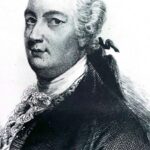YEKUNO AMLAK
- 4 Min Read
Yekuno Amlak (12?-1285) ruled as emperor of Ethiopia from 1270-85. He was the founder or “restorer” of the Solomonic dynasty (whose members claimed descent from King Solomon, the second king of the united realm of Judah-Israel, who reigned in about the 10th century BC) after the fall of the Zagwé dynasty in about 1270. His reign was noted for the shift of central authority from Lasta to Shawa.

PHOTO CAPTION: Yekuno Amlak. SOURCE: EA Library
Yekuno Amlak was the son of Tasfa Iyasus, a descendant of Del Na’ad, the only prince who escaped the massacre of imperial princes in Damo in the 10th century AD by Gudit, or Judith, and who found asylum in Shawa. There are several versions of his rise to power. One says that Yekuno Amlak was born and brought up in Lasta, and somehow became attached to the ruling family, but was persecuted because of a prophecy that he would one day usurp power. As a result of the persecution, he sought asylum with his relative, Takla Haymanot, the then temporary Abuna of Ethiopia, and his teacher Iyasus-Moa, the abbot of Hayq. Sympathising with Yekuno Amlak, Takla Haymanot and Iyasus-Moa used their influence and convinced Naakuto Laab, the last Zagwé king to hold power, who is said to have reigned for at least 40 years, to abdicate in favor of Yekuno Amlak.
Another version says that Yekuno Amlak used to live in Shawa, his birthplace, and, as a pretender to the throne, made Takla Haymanot his confidant in state affairs. Takla Haymanot mustered support for him from Shawa, as well as bringing about the voluntary abdication of Naakato Laab. A version of this story states that once Yekuno Amlak was established in Shawa, he mustered his force of six regiments, fought against Naakuto Laab, and took over the government. The legend also maintains that Yekuno Amlak came to power largely through the support of the Church, although his early life remains obscure. In relation to the version that power was transferred only after a battle, historians hold this to be plausible for the following reasons.
Firstly, although the Zagwé were noted more for their religious zeal than for their military prowess, it is impossible to say that they would have abdicated without a struggle. Secondly, there were three Zagwé kings, who ruled without much authority, after Naakuto Laab came to power. It may be inferred from this that the Zagwe dynasty attempted to cling to the throne, which would have been likely in the early stages of the establishment of a new dynasty. Partly as a reward, and partly in fulfilment of a promise he made to Takla Haymanot and Iyasus-Moa. Yekuno Amlak allegedly granted vast powers to the Church. To Takla Haymanot he gave one-third of the kingdom, which the Church has claimed ever since.
He stopped the succession of Ethiopians to the arch-bishop, however, perhaps to prevent the rise of an ambitious pretender, or to avert possible heresies. To lyasus-Moa and his successors, he gave the position of ‘Aqabe-Saat, which was then practically equivalent to that of a modern prime minister. Yekuno Amlak pacified the party which supported him, and also gave certain rights and prerogatives to the descendants of the Zagwé kings. They were allowed to beat their drums before the emperor, to join him in court as an equal, and were not controlled by the Abbot of Hayq.
After he came to power, Yekuno Amlak consolidated his hold on the government. In spite of his alleged friendship with the Ethiopian Muslims, which is evidenced by his letter to the Khalifa, or Mameluke sultan, of Egypt, Rukn al-Din al-salih, also known as Baybars I (ruled 1260-77), he disliked Egyptian ambition for political power in Ethiopia. His forces fought and defeated other ambitious Ethiopian rebels and Muslims. This policy led Baybars to refuse to send him a bishop from Alexandria.
Yekuno Amlak ruled from his capital in Tagulat, near Dabra Berehan in Shawa, and had the leisure to correspond with the Byzantine emperor Michael VIII Paleologus, who reigned from 1259-82, to whom he sent presents of several giraffes. His reign was noted for the revival of literature. But apart from his church buildings, he left no imperial palaces or other imposing buildings.
TSEHAI BERHANE SELASSIE



